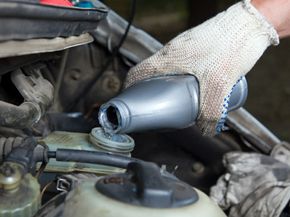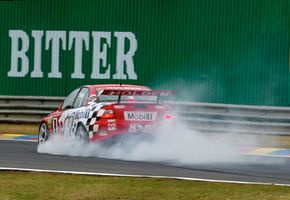The three main types of brake fluid now available are DOT3, DOT4 and DOT5. DOT3 and DOT4 are glycol-based fluids, and DOT5 is silicon-based. The main difference is that DOT3 and DOT4 absorb water, while DOT5 doesn't.
One of the important characteristics of brake fluid is its boiling point. Hydraulic systems rely on an incompressible fluid to transmit force. Liquids are generally incompressible while gases are compressible. If the brake fluid boils (becomes a gas), it will lose most of its ability to transmit force. This may partially or completely disable the brakes. To make matters worse, the only time you are likely to boil your brake fluid is during a period of prolonged braking, such a drive down a mountain -- certainly not the best time for brake failure!
Advertisement

